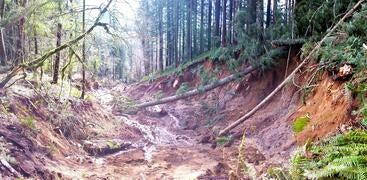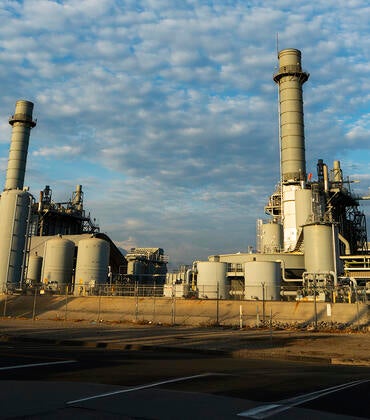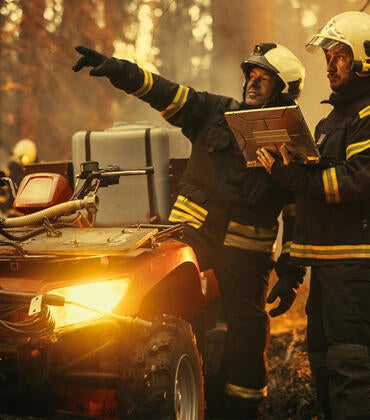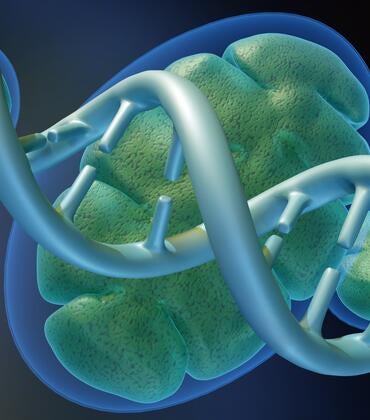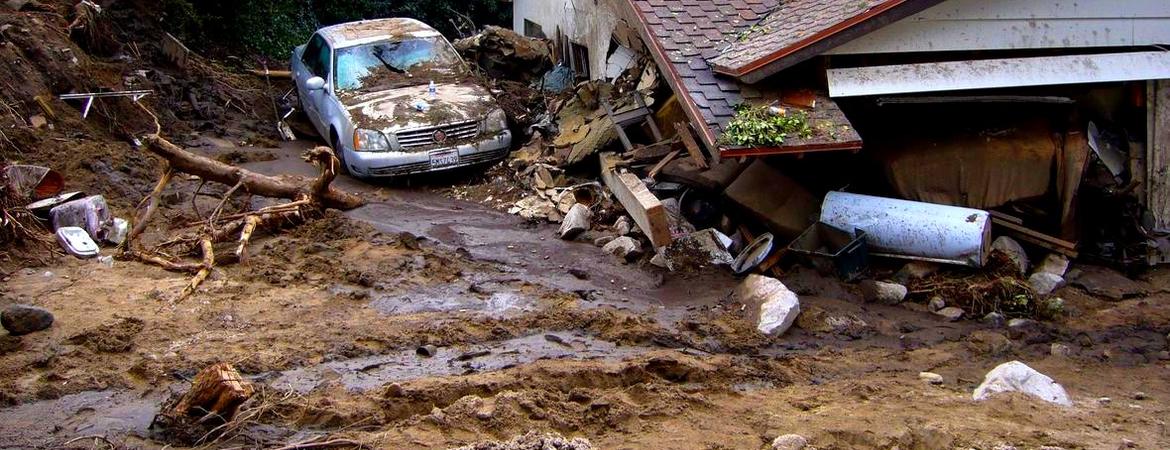
Storms now pounding Southern California are raising the specter of more danger for residents -- debris flows in areas already reeling from devastating fires. Debris flows are like mudslides, except much faster and more destructive, as they contain a mix of rock, plants and even boulders or trees in addition to mud.
Andrew Gray, an associate professor of watershed hydrology at UC Riverside, is an expert on the way water and sediment move through landscapes after wildfires. He weighs in here on the threats to life and infrastructure posed by these fast-moving flows, and how residents can best respond.
Q: In your mind, what is the “perfect storm” for a debris flow -- the perfect combination of conditions that would precipitate one?
A: First and foremost, if you are living near any of the recent burn scars in Southern California, please pay attention to local hazard warnings during the rainstorms this week ¾ especially evacuation orders.
The best (worst) recipe for post-fire debris flows in Southern California is high-intensity rainstorms interacting with steep hillslopes that were very recently burned. The atmospheric rivers that deliver rain to Southern California in the winter commonly meet or even exceed the rainfall intensities required to trigger post-fire debris flows.
Q: What can we expect this week and in the coming months in the burn scars from the recent Southern California fires?
It looks like the storm this week will result in moderate to high debris flow risks across much of the Palisades Fire and Eaton Fire burn areas. The USGS conducts emergency assessments of post-fire debris flow hazards. Their approach is the current standard in the Western U.S., and many hazard managers rely on their maps of debris flow risks.
The kind of debris flows that we mostly see during the first year after fires in mountainous shrublands are runoff-driven. They are the result of large supplies of water and sediment to the channels draining burn scars during high-intensity rainfall. The soil surface of recently burned shrublands tends to have much lower infiltration rates than unburned areas, especially if the burn severity is moderate to high, which is common in these fires.
When rain falls on these surfaces, more of it reaches the group because of the lack of vegetation to intercept it, and then a larger proportion of this becomes runoff. The burned soil surfaces also tend to be very easy to erode.
These characteristics tend to recover relatively rapidly in these systems, so the first months to year are often the most hazardous 'window of disturbance' for producing runoff-driven debris flows. Steeper watersheds also have a higher tendency to produce debris flows.
The wildland portions of the Palisades and Eaton Fires have an abundance of steep slopes recently burned at moderate to high severities. They are very prone to producing debris flows during rainstorms such as the one approaching us this week.
Q: Once a debris flow happens, does that make it less likely to happen again for a while in the same area?
A: A recent debris flow is direct evidence that the watershed is in the condition to produce them, rather than evidence that the risk has been removed.
That said, successive rainstorms can contribute to decreasing the hillslope surface conditions, which can result in increased infiltration rates and lower sediment supplies over time, while the debris flows themselves are removing sediment from burn areas and channels. With proportionally less water and sediment supply, we do tend to see lower debris flow volumes after a succession of storms on a broad scale, on average, across many watersheds.
For the public, I think it’s best to consider burn scars and the channels that drain them as hazardous areas during rainfall events during the first year or two (or more) after fire. It is very common to see debris flows emerge from canyons draining into communities along the mountain front during each rainstorm of the first post-fire wet season.
Q: If we’re worried about a flow, what actions can we take to prevent one?
A: There are many steps that communities can and do take to mitigate debris flow impacts, but in the short term, I don't think there is anything that can feasibly be done to prevent a post-fire debris flow from occurring.
A lot of work has gone into investigating different methods of slope stabilization to decrease runoff and sediment production, but as far as I know, they have not been effective or scalable enough to decrease debris flows emerging from canyons draining 10s-1000s of acres of burned watersheds.
Long-term infrastructure projects addressing debris-flow risks are very common along the mountain fronts of Southern California, of which debris basins are perhaps the most conspicuous feature. Debris basins are essentially dammed reservoirs that are designed to retain sediment but allow water drainage. There are around 200 of them managed by Los Angeles County alone. Building, maintaining, and managing these debris basins (particularly cleaning them out before and during the post-fire wet season) is a big part of debris flow management in many communities.
There are many other aspects of hazard management as well, including temporary infrastructure to help guide flows that may escape drainage channels, and perhaps most importantly establishing and executing systems for debris flow hazard mapping within the community, which in turn informs mitigation and evacuation measures.
Q: What does a debris flow do to the soil? How long does it take for the land to recover when one happens?
A: The impacts of fire on burned hillslopes and their recover are very important topics because they play critical roles in the drivers of debris flows, namely runoff and sediment generation. With fire, infiltration rates can decrease from soil pore clogging from ash and fine sediment, crusting from direct rain droplet impacts on bare soils, and the development of hydrophobic layers when soil organic matter is combusted.
Soil heating can also destroy soil aggregates and increase erodibility of the soils. Some of these soil properties seem to recover to post-fire conditions relatively rapidly (months), others may take much longer (years). The rainfall and runoff processes that contribute to debris flow generation are likely important components of the recovery trajectory of soils after fire.
I'm currently collaborating with UCR soil scientist Daniel Hirmas and graduate student Ben Newcomb at Texas Tech University, along with the Tree People Land Trust on a USDA Natural Resources Conservation Service-funded project investigating how these and other dynamic soil properties change and recover with fire, and how this may depend on soil type and vegetation.
